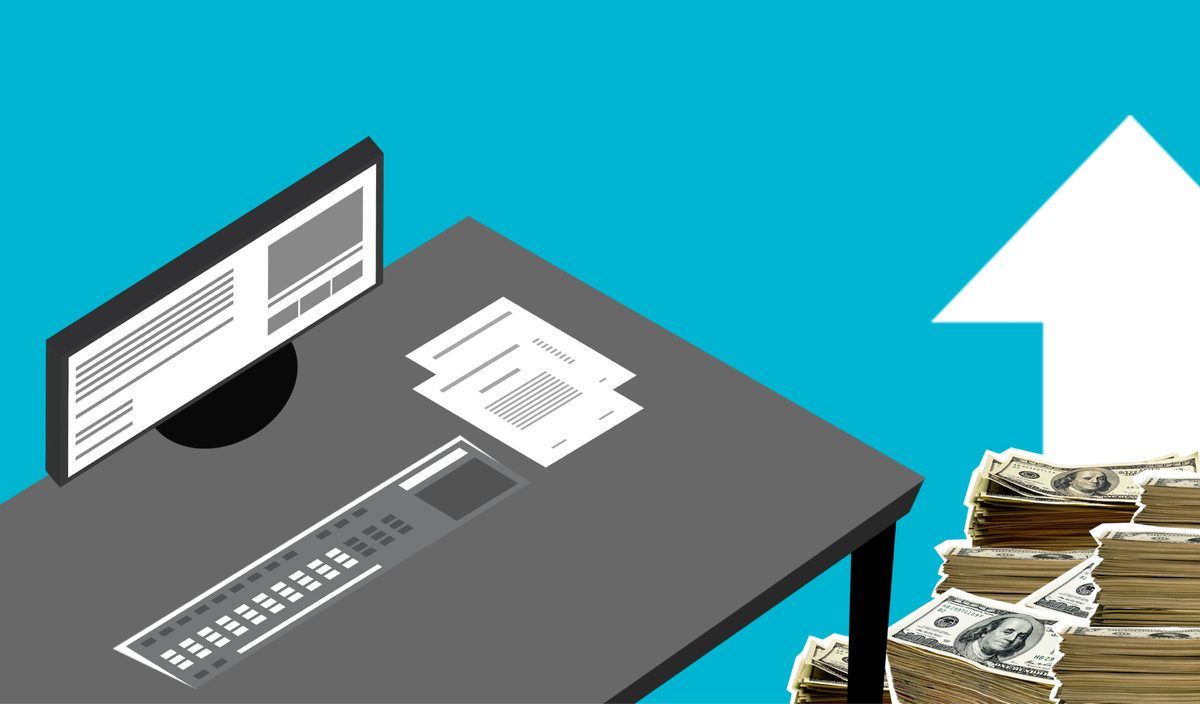In this edge computing vs cloud computing comparison, we will explain the definition of both terms, their best examples, and more. Is edge computing just a rebranded form of cloud computing, or is it something genuinely new? While cloud computing use has been on the rise, advances in IoT and 5G have given birth to technological breakthroughs – edge computing being one of them. The hybrid cloud enables IT administrators to leverage the strengths of both the edge and cloud. Still, they must understand the benefits and drawbacks of each technology to integrate them into business operations properly. Edge computing draws computers closer to the data source, whereas cloud computing makes sophisticated technology available over the internet.
Edge computing vs cloud computing: What do they mean?
Businesses and organizations have already taken their computing activities to the cloud, which has shown to be a successful method for data storage and processing. On the other hand, cloud computing is not efficient enough to handle the fast stream of data produced by the Internet of Things (IoT). So, given current cloud-centric architecture limitations, what else can be done?
Edge computing is the answer. Today’s computers are moving from on-premises servers to the cloud server and then, more rapidly, to the Edge server, where data is collected from the outset.

Edge computing and cloud computing are two important elements of today’s IT environment. But before edge computing vs cloud computing, we should understand what these technologies entail.
What is cloud computing?
Cloud computing is the provision of computing resources, such as servers, storage, databases, and software for on-demand delivery over the Internet rather than a local server or personal computer. Cloud computing is a distributed software platform that employs cutting-edge technology to create highly scalable environments that may be used by businesses or organizations in a variety of ways remotely. IF you wonder about cloud computing vulnerabilities and the benefits of cloud computing, go to these articles.
Any cloud service provider will offer three major characteristics:
- Flexible services
- The user is responsible for the costs of various memory, preparation, and bandwidth services.
- The cloud service providers handle and administer the software’s entire backend.
Cloud computing jobs are also on the rise. We have already explained cloud computing jobs requirements trends and more in this article.
What is edge computing?
One of the most significant features of edge computing is decentralization. Edge computing allows for using resources and communication technologies via a single computing infrastructure and the transmission channel.
Edge computing is a technology that optimizes computational needs by utilizing the cloud at its edge. When it comes to gathering data or when someone does a particular action, real-time execution is possible wherever there is a need for that. The two most significant advantages of edge computing are increased performance and lower operational expenses.
There is also fog computing-related to them. If you wonder, “is fog computing more than just another branding for edge computing?” we discussed fog computing definition, origins, and benefits.
Edge computing vs cloud computing: The differences
The first thing to realize is that cloud computing and edge computing are not rival technologies. They aren’t different solutions to the same problem; rather, they’re two distinct ways of addressing particular problems.
Cloud computing is ideal for scalable applications that must be ramped up or down depending on demand. Extra resources can be requested by web servers, for example, to ensure smooth service without incurring any long-term hardware expenses during periods of heavy server usage.
Edge computing is also well suited for real-time applications that produce a lot of data. IoT, for example, is the networked use of smart devices. The internet of things (IoT) is a type of data collection that involves connecting various physical devices that exist today to the internet.
These devices lack powerful computers and rely on an edge computer for computational demands. Doing the same thing with the cloud would be too slow and infeasible because of the amount of data involved.
In a nutshell, both cloud and edge computing have applications that can be effective, but they must be utilized depending on the application. So, how do we choose? What are the differences between edge computing and cloud computing?
Edge computing vs cloud computing: Architecture
The term cloud computing architecture refers to the many loosely coupled elements and sub-components needed for cloud computing. It describes the components and their connections. Cloud computing provides IT infrastructure and applications as a service over internet platforms on a pay-as-you-go basis to individuals and businesses.
Edge computing is a more advanced version of cloud computing, combining distributed computing and on-premises servers to solve latency, data security, and power consumption by bringing apps and data closer to the network edge.
Edge computing vs cloud computing: Benefits
Things not only consume data, but they also produce it in edge computing. It allows compute, storage, and networking services running on end devices to communicate with cloud computing data centers.
Because the cloud demands a lot of bandwidth, and wireless networks have restrictions. However, edge computing enables you to use less bandwidth. Because devices in close proximity are employed as servers, most concerns such as power consumption, security, and latency are alleviated effectively and efficiently. Edge computing is used to enhance the IoT’s overall performance.
Edge computing vs cloud computing: Programming
Several application programs may be utilized for development, each with a distinct runtime.

On the other hand, cloud development is best when developed for a development environment and uses only one programming language.
Edge computing vs cloud computing: Security
Because edge computing systems are decentralized, the cybersecurity paradigm associated with cloud computing is changing. This is because edge computers may send data directly between nodes without first communicating with the cloud. An edge system that utilizes cloud-independent encryption techniques that work on even the most resource-constrained edge devices is required. However, this may have a detrimental impact on the security of edge computers vis-à-vis cloud networks. A chain is only as strong as its weakest link, after all. On the other hand, Edge computing improves privacy by making data less likely to be intercepted while in transit since it restricts the transmission of sensitive information to the cloud.

Because cloud computing platforms are inherently more secure due to vendors’ and organizations’ centralized deployment of cutting-edge cybersecurity measures, they are often more secure. Cloud providers frequently employ sophisticated technologies, rules, and controls to boost their overall cybersecurity posture. In the case of cloud technologies, data security is simpler due to the widespread adoption of end-to-end encryption protocols. Finally, cybersecurity professionals implement tactics to protect cloud-based infrastructure and applications against potential hazards and advise clients on how to do the same.
Edge computing vs cloud computing: Relevant organizations
Edge Computing may be better for applications with bandwidth difficulties. Edge computing is especially beneficial for medium-scale firms on a tight budget who wish to optimize their money.
Given that large data processing is a typical issue in development programs, cloud computing is more appropriate.
Edge computing vs cloud computing: Operations
Edge computing is when a system rather than an application handles data processing.
Cloud storage takes place on cloud networks, such as Amazon EC2 and Google Cloud.
Edge computing vs cloud computing: Speed & Agility
Edge technologies take their data-driven counterparts’ analytical and computational capabilities as close to the data source as feasible. This improves responsiveness and throughput for applications running on edge hardware. A well-designed and sufficiently powerful edge platform could outperform cloud-based systems for certain applications. Edge computing is superior for apps that require little reaction time to ensure secure and efficient operations. Edge computing may emulate a human’s perception speed, which is useful for applications such as augmented reality (AR) and autonomous vehicles.
Traditional cloud computing configurations are unlikely to match the agility of a well-designed edge computing network, yet cloud computers have their way of oozing with speed. For the most part, cloud computing services are available on-demand and can be obtained through self-service. This implies that an organization can immediately deploy even huge quantities of computing power after a few clicks. Second, cloud platforms make it easy for businesses to access a wide range of tools, allowing them to develop new applications rapidly. Any business may obtain cutting-edge infrastructure services, massive computing power, and almost limitless storage on demand. The cloud allows businesses to conduct test marketing campaigns without investing in costly hardware or long-term contracts. It also allows enterprises to differentiate user experiences through testing new ideas and experimenting with data.
Edge computing vs cloud computing: Scalability
Edge computing demands scalability according to the heterogeneity of devices. This is because different items have varying levels of performance and energy efficiency. Furthermore, when compared to cloud computers, edge networks operate in a more dynamic environment. This implies that an edge network would require solid infrastructure for smooth connections to scale resources rapidly. Finally, security measures on the network might cause latency in node-to-node communication, slowing downscaling operations.
One of the primary advantages of cloud computing services is scalability. Businesses may quickly expand data storage, network, and processing capabilities by using an existing cloud computing subscription or in-house infrastructure. Scaling is usually rapid and convenient, with no downtime or interruption associated. All of the infrastructures are already in place for third-party cloud services, so scaling up is as easy as adding a few extra permissions from the client.
Edge computing vs cloud computing: Productivity & Performance
In an edge network, computing resources are located close to end-users. This implies that client data is analyzed with analytical tools and AI-powered solutions within milliseconds. As a result, operational efficiency—one of the system’s major advantages—is improved. Clients who meet the specified use case will benefit from increased productivity and performance.

Cloud computing eliminates the need for “racking and stacking,” such as setting up hardware and correcting software related to on-site data centers. This increases IT personnel’s productivity, allowing them to concentrate on more important activities. Cloud computing providers also help organizations improve their performance and achieve economies of scale by constantly adopting the newest computing hardware and software. Finally, companies don’t have to worry about running out of resources because changing demand levels cause fluctuations in supply. Cloud platforms ensure near-perfect productivity and performance by ensuring that there is always the right amount of resources available.
Edge computing vs cloud computing: Reliability
Edge computing services require smart failover management. Users will be able to access a service entirely effectively even if a few nodes go down in an adequately set up edge network. Edge computing vendors also ensure business continuity and system recovery by using the redundant infrastructure. Edge computing can also improve performance by limiting or eliminating duplicate application data and packaging processes that are not directly related to one another. Edge computing systems may provide real-time detection of component failure, allowing IT staff to act promptly. On the other hand, Edge computing networks are less dependable because of their decentralized nature. Finally, because edge computers can function without access to the internet, they have several benefits over cloud platforms.
Edge computing is not as reliable as cloud computing. Data backup, business continuity, and disaster recovery are all simpler and less costly in the case of cloud computing because it is centralized. If the closest site becomes unavailable, copies of critical data are kept at various locations that may be accessed automatically. Even if the entire data center goes down, large cloud platforms are frequently capable of continuing operations without difficulty. On the other hand, Cloud computing requires a solid internet connection to function properly on both the server and client sides. Unless continuity procedures are in place, the cloud server will be unable to communicate with connected endpoints, bringing operations to a halt unless continuity mechanisms are in place.
The hybrid approach
As previously stated, cloud computing and edge computing are not rivals; instead, they address distinct difficulties. That raises the question: can they both be utilized in tandem?
Yes, this is possible. Many applications use a mixed approach that combines both technologies for maximum effectiveness. An on-site embedded computer, for example, is often linked to industrial automation equipment.
The main computer operates the device and handles complicated computations quickly. However, this computer also transmits limited data to the cloud, which manages the digital framework for the entire process.
By combining the power of both technologies, the app draws on the advantages of both paradigms, relying on edge computing for real-time processing while leveraging cloud computing for all other tasks.
Foggy edges of the cloud
As new ingredients are added to the tech term salad, we like to compare them, and the same goes for edge computing vs cloud computing comparison. However, this comparison only gives some of the answers we are after. The real question is how edge and cloud computing change the modern IT infrastructure.
Cloud and edge computing complement each other with several advantages and applications. Edge computing was developed to address cloud technology’s centralized data collection and analysis challenges. However, the cloud is still a great choice with its flexible resource management and higher overall utilization rates equate to cost savings.
The puzzle is completed for the nonce
Edge comes into the picture when there is no time to wait for data to be sent to and analyzed on the cloud. Edge computing completes the contemporary real-time data processing puzzle with the cloud and IoT. These three can work connected for real-time data processing.
Cloud and edge computing can do great things together for an organization, but we will remember what these technologies bring to the table separately before we delve into that. But first thing first, let’s clarify why we can’t wait for data to make its journey to central cloud platforms for analysis anymore.

Need for speed
Cloud computing platforms allow organizations to extend their infrastructure across multiple locations and scale computational resources up or down. Hybrid clouds provide businesses with unprecedented flexibility, value, and security for IT applications.
However, things have changed. Real-time AI apps need a lot of computer power, and they’re frequently located far from central cloud servers. Some workloads must remain on-premises or on a certain site due to security, latency, or residency regulations.
With the introduction of GPU-based AI solutions, organizations looked to augment networks with edge computing, a method of processing that takes place where data is generated. Edge computing refers to handling and storing data on-site in an edge device rather than processing it remotely on the cloud.

Storm clouds
The rapid expansion of IoT is one of the cloud’s most challenging problems. Devices are strewn about an organization’s physical IT environment, performing various activities from simple readings to complex operations in response to the production line or smart building requirements. IoT devices are data-rich, but they’re also “noisy,” which means a lot of that data is useless. This information is chatty in nature, as it isn’t a continuous flow rather than a series of incidents over time. Such data does not need to travel across the network; however, many IoT components lack the inherent intelligence to recognize this.
Tackling the complexities of an IoT environment with a cloud-only platform is not the ideal approach. The issue is that to utilize all of this data from these IoT devices, it must travel through the network and reach where that cloud capability exists. The latency caused by these processes also slows down the data itself and imposes a serious bandwidth restriction on the cloud. And this is exactly where edge computing steps in.

Taking the edge off workloads
IoT devices are generating ever more data, but we haven’t seen the peak yet. As 5G networks expand to more mobile devices, the amount of data generated will increase further. The promise of cloud computing and AI has long been to automate and accelerate innovation by promoting actionable knowledge from data. However, the enormous scale and complexity of data produced by networked devices have outpaced network and infrastructure capacity.
That device-generated data would have to go to a centralized data center or the cloud, creating bandwidth and latency problems. Edge computing is more efficient than this approach since data is processed and interpreted at or closer to its source. Thus, latency is considerably reduced because data does not travel over a network to be processed. Edge computing allows faster and more comprehensive data analysis, detailed insights, quicker responses, and better customer experiences.
If a network’s endpoints are connected by edge devices that can provide storage and processing capabilities, those devices’ storage and computing resources will be abstracted, pooled, and shared across a network—essentially becoming part of larger cloud infrastructure. Edge computing is not always connected to the cloud. Actually, edge computing’s usefulness stems from the fact that it is intentionally disconnected from clouds and cloud technology.

And now some fog
The emergence of edge computing also paved the way for developing new computing approaches that are very efficient in some scenarios. And fog computing is one of them. Some consider fog computing as Cisco’s ideal interpretation of edge computing, consequently their latest contribution to the terms bonanza we enjoy (!) today. However, this new “approach” has its differences and a few aces up on its sleeves, including the repeatable structure and scalable performance.
Fog computing also brings computing to the network’s edge Cisco-way. Moving storage and computing systems near the applications, components, and devices that require them reduces processing latency. This is especially important for connected IoT devices that create massive data. Because they are closer to the data source, these devices have less latency in fog computing.
The fog metaphor derives from the meteorological term for a cloud close to the ground, just as fog computing focuses on the network’s edge.
Cloud-optimized fog computing uses standard procedures to guarantee repeatable, organized, and scalable performance within the edge computing framework. But it differentiates by utilizing both edge processing and the infrastructure and networks for data transfer.
Fog computing eliminates the gap between the processing location and the data source by utilizing edge computing methods in an IoT gateway or fog node with LAN-connected processors or within the LAN hardware itself. This approach results in a greater physical distance between the computations and sensors, yet no additional latency.





